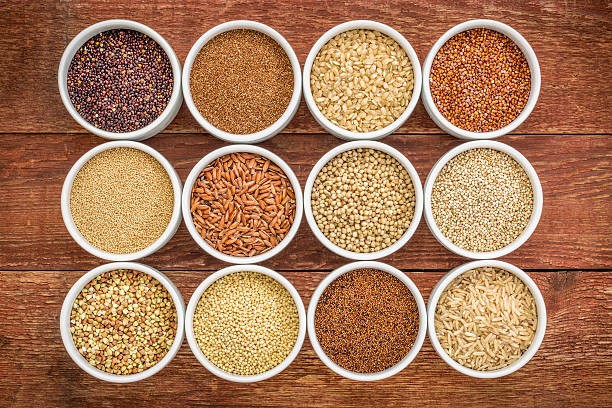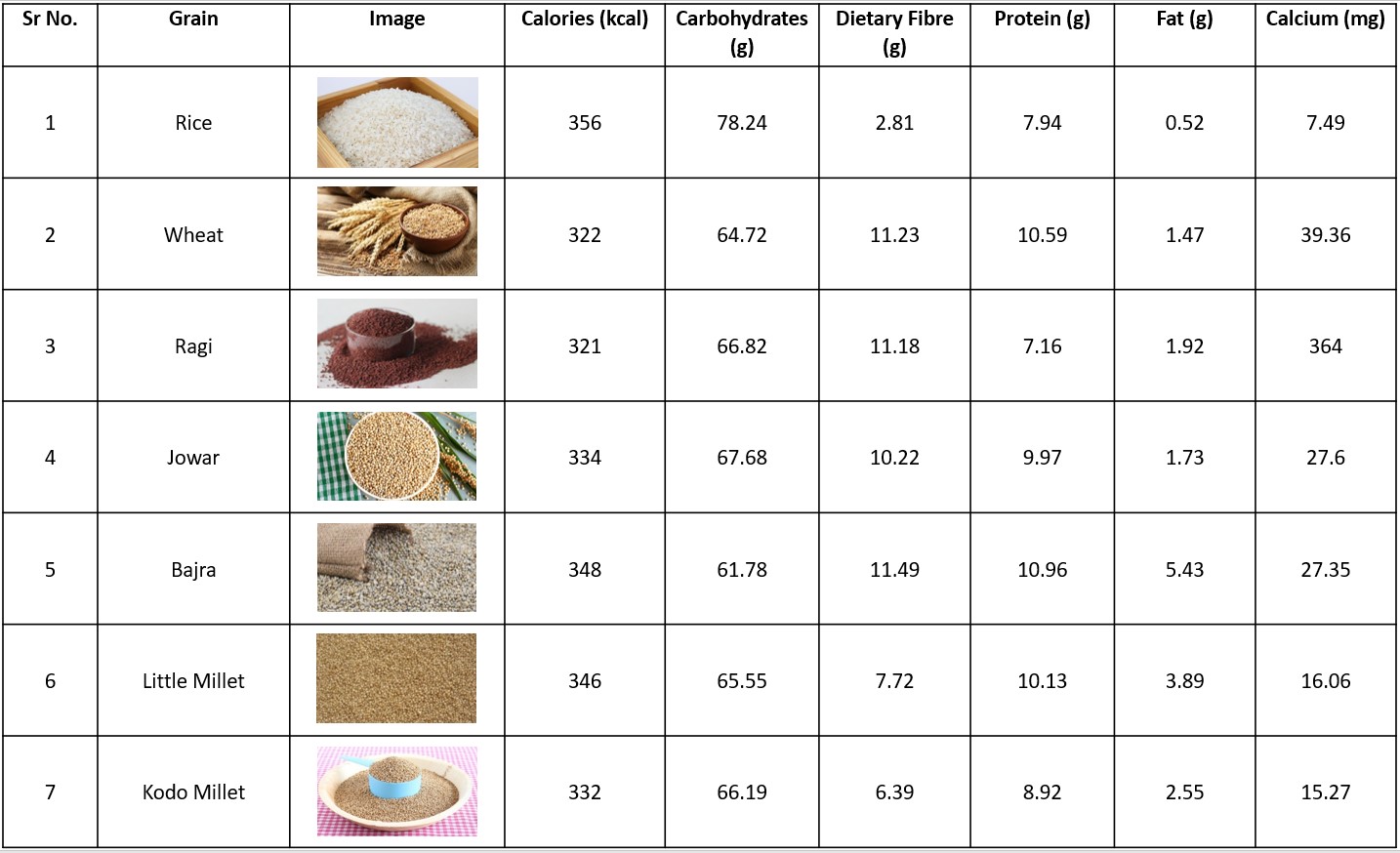Revival of India's hidden cereals: Millets the next Superfood
December 23, 2022

With the global trend of superfoods, here we have the return of our traditional grain ‘Millet’ back as a superfood. Its comeback is vocal and denotes a strong sense of traditional Indian diet. Not just in India, but even globally consumers have started adopting millets in a big way in their diet. It’s not just known for its nutrition & health benefits but also is environmentally friendly.

Millets as Superfoods
Millets are ancient, traditional grains that are round and small in size. They belong to the Poaceae family (Grass family) and are cultivated in Asian and African countries. They are also Gluten free, rich in fiber and antioxidant. These hardy grains are rain fed and require less water to grow. Millets were mostly used as fodder for animals but now its slowly taking its place on our plates as well.
There are various kinds of millets. Broadly they can be divided as Naked grains (Ragi, Jowar, Bajra) which do not have a hard husk and Husked grains (Foxtail, Little, Kodo) which requires the husk to be removed before consumption.
To know more on what are the traditional millets and what are they called in different languages refer: About Millets | Kaulige Foods - Bengaluru's Millet Hub
Millet Cultivation in India
Millet Cultivation in India is going on from ancient times. India is the largest producer of millets in the world with total cultivated area of 12.45 million hectares, producing 15.53 million tonnes. Bajra is the largest produced millet in India followed by Sorghum (Jowar). Among States, millet cultivation is highest in Rajasthan followed by Maharashtra. India is also the highest millet cultivator of Barnyard, Finger, Kodo, Little millet and pearl millet as well. Data of the last 10 years shows consistent, improved increase in millet cultivation in India. The Government of India is also encouraging to increase the consumption and production of millets and taking efforts to create consumer awareness.
Nutrition & Health Benefits of Millets
Millets are gluten free, fibre rich, have bioactive compounds and are low in glycaemic index. This makes it applicable for a number of health benefits.
Controls blood sugar levels- The low carbohydrate and fibre rich properties of millets makes it suitable for diabetes. The lowest carbohydrate and highest crude fibre are found in barnyard millet.
Reduces Micronutrient deficiency- Millets are high in micronutrients such as iron, calcium, zinc, magnesium, iodine as compare to other cereals. Ragi has highest amounts of calcium as compared to other grains.
Improves digestive health- The insoluble fibre in millets acts as a prebiotic which helps support good bacteria.
Obesity- The low glycaemic index, slow release of carbohydrates and fibre rich content makes it suitable for obese individuals.
To know on Fibre and its benefits, refer blog: Fibre: A Carbohydrate That Is Extremely Healthy | Information Center (foodlabelsolutions.com)
The Nutrition profile of some of the popular traditional millets in comparison with Rice and Wheat are shown in the table below:

Source: Indian Food Composition Table 2017 – National Institute of Nutrition
Millet cultivation: Solution to Climate & Food Challenges
The importance of Millet cultivation has now been recognised by the world with experts relying on Millet cultivation to solve food and water insecurity. Millet is a very efficient crop, they consume 70% less water than rice, grow in half time of wheat and need 40% less energy for processing. They are also resistant to pests, stress and varying climate which makes it a very steady crop. Not just that, millet cultivation generates sustainable income source for farmers with low investment. With Global population increasing rapidly and projected to reach 8.5 billion in 2030, there is a need for diversification of crop by promotion of crop cultivation that can grow in the toughest environment. Millets offers a solution to this climate and food crisis.
Government of India in boosting Millet cultivation
The United Nations declared 2023 as the International Year of Millets on proposal by Government of India. Government of India has also setup various events, programs and interactions on millets to engage consumers and create awareness. The Government is not just now but also from 2018 have started realising the potential of millet cultivation and hence the National Year of Millets was celebrated in 2018 with campaigns and awareness on millets. The Government has taken many steps to ensure millet cultivation to happen in full swing. Apart from notifying millets as nutri-cereals, Food Corporation of India (FCI) have been roped in for the provision of surplus millet transport. The Government of India also plans to roll out various programs in India and even Abroad to popularize millet consumption and cultivation. This can also be seen in the recently released Front of pack Labelling (FOPL) regulations of FSSAI (Food Safety and Standards Authority of India). The Indian Nutrition Rating (INR) Score which is a 5-star rating is calculated basis parameters including percentage of Fruits, Vegetables, Nuts, Legumes and Millets. This can be seen as a big policy change step to promote traditional millets.
To know more on Front of Pack Labelling Regulations, please refer blog: FSSAI Front of Pack Labelling in India | Information Center (foodlabelsolutions.com)
Millet Adoption by Food Industry
Although the use of Millets in processed food industry and restaurant or hotel chains is not seen much, however a lot of newer food companies are formulating millet-based products. Amazon, Flipkart or any ecommerce websites have a long list of Food Brands offering millet-based products. Just a single search on millet-based products will give you brands such as the Wild Date, Rooted Co., True Elements, Slurp Farm, Food Strong, 24 Mantra, Gooddiet, ITC, etc. They offer products such as Millet pancakes, dosa, cookies, Chips etc.
Restaurants and Hotel chains have also in a big way brought in millet-based menus in their kitchens. Some examples of restaurants that brought in millet-based menu options are Punjab Grill. Through its Millet menu festival, they introduced millet-based food dishes such as Bajra Malpua, Puffed Bajra, Jowar and Tamatar Cheela, Ragi Te Khubani ka Halwa, Multigrain sevpuri to name a few. The Marriot Hotel at Indore and the Bombay Canteen have also introduced similar millet-based menu options. These millet-based menu options have also gained popularity as consumers realise the importance of health with taste.
Revival of traditional Millets
As people are becoming more health and climate conscious, the demand for tasty, nutritious and environmentally friendly food options is on high surge. With the boost from Government of India, the Food Industry are bringing in millet-based products into the market. Let’s look forward to 2023 as the International Year of Millets and take pride in calling India as world leader in Millet cultivation.
References:
Healthline. What Is Millet? Nutrition, Benefits, and More (healthline.com). Accessed on 30November, 2022
Kaulige. About Millets | Kaulige Foods - Bengaluru's Millet Hub. Accessed on 30 November, 2022
ASSOCHAM. Millets: The Future Super Food for India, June 2022. Report_Millets 2022.indd (assocham.org). Accessed on 30 November, 2022.
Kumar, A., Tomer, V., Kaur, A. et al. Millets: a solution to agrarian and nutritional challenges. Agric & Food Secur 7, 31 (2018). https://doi.org/10.1186/s40066-018-0183-3
Observer Research Foundation. Millet: The super food for combating food and water security | ORF (orfonline.org). Accessed on 30 November, 2022.
United Nations News. Millets prove tasty solution to climate and food security challenges | UN News. Accessed on 30 November, 2022.
National Conference on Kharif Campaign, April 2022. Crops.pdf (agricoop.nic.in). Accessed on 30 November, 2022.
Press Information Bureau. Government of India. March, 2022. Millets as Superfood (pib.gov.in). Accessed on 30 November, 2022
Restaurant India. Indian Retailer. November, 2018. Restaurants Create Healthy Menu with Millets (indianretailer.com). Accessed on 1 December, 2022

Olivia Crasto (MSc in Food Processing & Preservation)
Olivia is a Learner for Life, Eco enthusiast and loves to experience nature and its beauty
